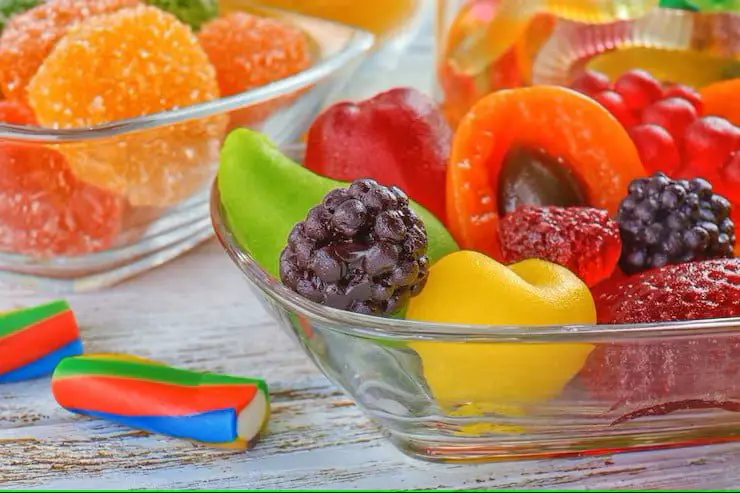Table of Contents
Freeze-Dried Candy
Freeze -dried candy is a delightful treat that has captured the hearts of many due to its unique texture and intense flavor. Unlike traditional candy, which is often chewy or sticky, freeze-dried candy becomes light, crunchy, and bursts with flavor as it melts in your mouth. Making freeze-dried candy at home may seem complex, but with the right equipment and steps, you can create these delicious treats yourself. This guide provides a detailed, step-by-step process to help you make freeze-dried candy at home.
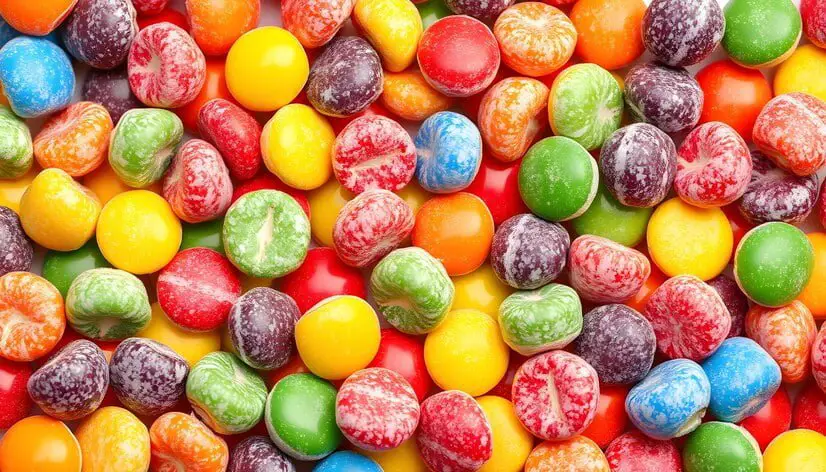
What is Freeze-Dried Candy?
Freeze-dried candy is created through a process called sublimation, where water is removed from the candy in its frozen state. The process involves freezing the candy, then placing it in a vacuum chamber where the ice turns directly into vapor without becoming liquid. This method preserves the candy’s flavor and nutrients while giving it a light, airy texture. The result is a snack that’s intensely flavorful, easy to store, and fun to eat.
Materials and Equipment Needed
To make freeze-dried candy at home, you’ll need the following:
- Candy of Your Choice: Popular options include gummy bears, Skittles, marshmallows, taffy, and fruit-flavored chews. You can experiment with different candies to see which ones yield the best results.
- Home Freeze Dryer: This is a specialized machine designed to freeze-dry food by lowering the temperature and creating a vacuum. It’s an investment, but essential for producing high-quality freeze-dried candy.
- Freezer: While not mandatory, a freezer can be useful for pre-freezing the candy, which can help speed up the freeze-drying process.
- Airtight Containers or Vacuum-Sealed Bags: These are necessary for storing the freeze-dried candy to keep it fresh and crunchy for an extended period.
What Types of Candy Can Be Freeze-Dried: A Detailed Guide
Freeze-drying is a process that removes moisture from food, transforming it into a light, crispy, and shelf-stable version of its original form. While freeze-drying is often used for fruits and vegetables, candy can also be freeze-dried, resulting in a unique texture and intensified flavors. Here’s a detailed guide on the kinds of candy that can be freeze-dried and what to expect from each type.
1. Gummy Candies (Gummy Bears, Worms, etc.)
Gummy candies are one of the most popular choices for freeze-drying. The process transforms their chewy texture into something crunchy and airy, giving them a whole new appeal.
- What Happens: The moisture is removed, causing the gummy candy to expand slightly and become light and crispy. The flavors also become more concentrated, offering a burst of taste with every bite.
- Best For: Gummy bears, gummy worms, and any other chewy, gelatin-based candies.
- Uses: Freeze-dried gummies are great as snacks or as a crunchy topping for desserts like ice cream.
2. Skittles and Hard Candies
Hard candies like Skittles are another excellent candidate for freeze-drying. The process alters the texture significantly, making them puff up and become brittle.
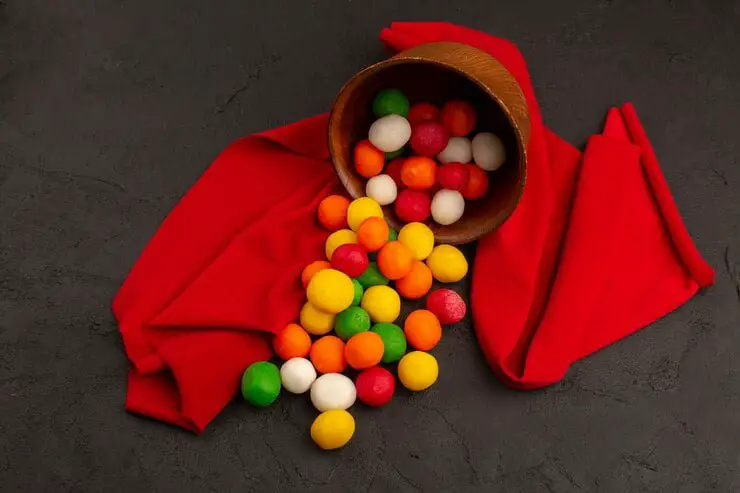
- What Happens: The candy slightly puffs up as the moisture is removed, creating a crispy shell. The intense flavor of hard candies becomes even more pronounced after freeze-drying.
- Best For: Skittles, Sweet Tarts, Jawbreakers, and other similar hard candies.
- Uses: These can be enjoyed as a snack, used in baking, or as a crunchy element in trail mixes.
3. Marshmallows
Marshmallows are easy to freeze-dry and result in a product similar to the small, crunchy marshmallows found in cereals.
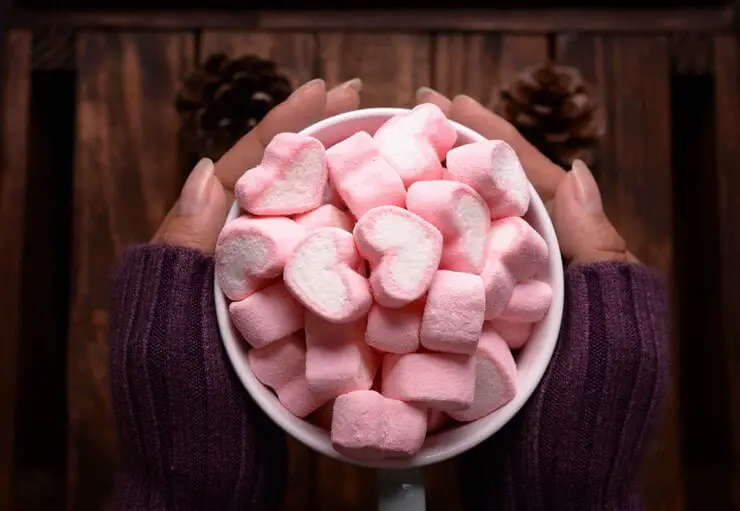
- What Happens: Marshmallows become extremely light and crispy when freeze-dried, retaining their shape but gaining a unique crunch.
- Best For: Standard marshmallows, mini marshmallows, and flavored varieties.
- Uses: Perfect for adding to hot chocolate, cereal, or just eating as a crunchy snack.
4. Taffy and Fruit Chews
Taffy and chewy fruit candies undergo a significant transformation during freeze-drying, losing their chewiness and becoming light and crispy.
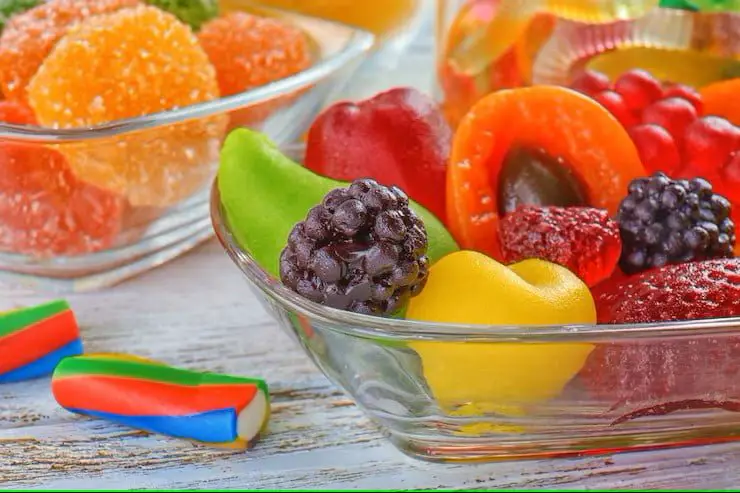
- What Happens: The chewy texture is completely altered, leaving behind a crunchy, airy piece of candy that melts in your mouth.
- Best For: Saltwater taffy, Starburst, Laffy Taffy, and other similar candies.
- Uses: These are great for snacking or as an interesting garnish for desserts.
5. Chocolate-Covered Candies
Freeze-drying chocolate-covered candies can be a bit tricky, but the results are worth it if done correctly.
- What Happens: The outer chocolate shell can crack slightly as the moisture is removed from the filling, resulting in a crunchy texture throughout. The flavor of the chocolate and filling can become more pronounced.
- Best For: Chocolate-covered raisins, nuts, or caramels.
- Uses:These can be enjoyed as a snack, or added to trail mixes and baked goods.
6. Caramel and Nougat Candies
Caramel and nougat candies take on a new texture when freeze-dried, turning from soft and chewy to crispy and crunchy.
- What Happens: The caramel or nougat dries out completely, leaving a brittle texture that crumbles in your mouth. The rich flavors become even more intense.
- Best For: Milk Duds, Rolos, and candy bars with caramel or nougat fillings.
- Uses: These make for a unique treat on their own or can be crumbled and used as toppings for desserts.
7. Fruit-Flavored Candies
Candies with fruit flavors, especially those with a juicy center or soft exterior, freeze-dry beautifully, creating a crisp, flavorful treat.
- What Happens: These candies dry out and become crunchy, often enhancing the fruity flavors. The texture changes from chewy or soft to crisp.
- Best For:Jolly Ranchers, Starburst, and other fruit-flavored candies.
- Uses: These are great for snacking or adding a fruity crunch to various desserts.
Tips for Freeze-Drying Candy
- Smaller Pieces Dry Faster: Cutting larger candies into smaller pieces can help them dry more quickly and evenly.
- Check for Complete Dryness: It’s essential to ensure the candy is fully dry before storing to prevent spoilage.
- Store Properly: To maintain the crisp texture, store freeze-dried candy in airtight containers or vacuum-sealed bags.
Step-by-Step Guide to Making Freeze-Dried Candy
1. Select Your Candy
Start by choosing the candy you want to freeze-dry. The type of candy you select will influence the final texture and flavor. Gummies, marshmallows, and chewy candies are particularly popular because the freeze-drying process transforms them into crunchy, airy treats with intensified flavors.
2. Prepare the Candy
Depending on the size and type of candy, you may need to cut it into smaller pieces. For instance, large marshmallows should be halved or quartered to ensure they freeze-dry evenly. Smaller candies like Skittles or gummy bears can be freeze-dried whole.
3. Optional: Pre-Freeze the Candy
While not necessary, pre-freezing the candy can help speed up the freeze-drying process. To do this, spread the candy out on a baking sheet, ensuring the pieces aren’t touching each other, and place the sheet in the freezer for several hours or overnight. Pre-freezing also helps the candy retain its shape during the drying process.
4. Load the Candy into the Freeze Dryer
Once your candy is prepared and, if necessary, pre-frozen, load it onto the trays of your freeze dryer. Make sure the candy pieces are spread out evenly and not overlapping. This allows the freeze-dryer to remove moisture from all sides of the candy uniformly.
5. Set Up the Freeze Dryer
Turn on your freeze dryer and select the appropriate settings. Most modern freeze dryers have preset options for candy, but if yours doesn’t, set the temperature to around -40°F (-40°C) to begin the freezing process. The machine will automatically cycle through freezing and drying phases, gradually removing all moisture from the candy. This process can take anywhere from 12 to 24 hours depending on the type of candy and the specific freeze dryer model.
6. Monitor the Freeze-Drying Process
Throughout the process, monitor the candy’s progress. The freeze-dryer will alternate between freezing and vacuum phases, slowly extracting water from the candy. It’s important to periodically check the candy to ensure it’s drying evenly and to prevent over-drying.
7. Check for Dourness
After the freeze-drying cycle is complete, check the candy to ensure it’s fully dried. Properly freeze-dried candy should be light, crisp, and have no moisture left inside. If the candy still feels slightly soft or chewy, it needs more time in the dryer. You can run an additional drying cycle if necessary.
8. Cool and Store the Freeze-Dried Candy
Once you’re satisfied with the texture, remove the candy from the freeze dryer and let it cool to room temperature. This step is crucial as it prevents condensation from forming when the candy is stored. After cooling, place the freeze-dried candy into airtight containers or vacuum-sealed bags. Proper storage is essential to maintain the candy’s crispness and prevent it from absorbing moisture from the air. When stored correctly, freeze-dried candy can last for months or even years.
Tips for Making Freeze-Dried Candy
- Experiment with Different Candies: Not all candies react the same way to freeze-drying. Gummy candies often puff up and become airy, while others, like Skittles, remain dense but develop a crunchy texture. Don’t hesitate to try different types to find your favorite freeze-dried treat.
- Avoid High-Fat Candies: Candies with high fat content, such as chocolate, do not freeze-dry well. The fat prevents moisture from being fully extracted, resulting in a product that can become sticky or oily rather than crisp.
- Start with Small Batches: If you’re new to freeze-drying, begin with small batches of candy. This allows you to fine-tune your process and understand how different types of candy respond to freeze-drying before scaling up.
- Monitor the Process Closely: Depending on the type of candy and the settings of your freeze dryer, the drying time can vary. Keep an eye on the process to avoid under-drying (which can lead to spoilage) or over-drying (which can degrade the candy’s quality).
Benefits of Freeze-Dried Candy
- Long Shelf Life: Freeze-dried candy, when stored properly, has a much longer shelf life than traditional candy. This makes it a great option for long-term storage or as a portable snack that doesn’t require refrigeration.
- Intense Flavor: The freeze-drying process concentrates the flavors in the candy, making each bite more intense and satisfying.
- Unique Texture: Freeze-dried candy offers a unique, crunchy texture that’s different from any other type of candy. This texture makes it a popular choice for those looking for a new way to enjoy their favorite sweets.
Dry Ice vs. Freeze-Drying Machine for Candy: A Comparison
When it comes to freeze-drying candy, both dry ice and freeze-drying machines are popular methods. Each has its own advantages and drawbacks depending on what you’re looking to achieve. Here’s a comparison specifically focused on using dry ice versus a freeze-drying machine for making dried candy.
1. How They Work
Dry Ice
Dry ice is solid carbon dioxide that sublimates directly from a solid to a gas. When used to freeze candy, it can quickly freeze the candy, but it doesn’t remove moisture like a freeze-drying machine does.
- Process:Candy is placed in a container with dry ice. The extreme cold from the dry ice rapidly freezes the candy. However, because dry ice doesn’t create a vacuum, it doesn’t remove the moisture entirely, which is necessary for true freeze-drying.
- Moisture Removal:Partial – Dry ice can freeze the candy, but some moisture remains, meaning the candy won’t be as dry or crisp as with a freeze-drying machine.
Freeze-Drying Machine
A freeze-drying machine is specifically designed to freeze and then remove nearly all the moisture from the candy by sublimating the ice directly into vapor in a vacuum environment.
- Process: Candy is first frozen inside the machine. Then, a vacuum is applied, and the moisture in the candy sublimates, turning directly from solid ice to vapor without passing through a liquid phase.
- Moisture Removal: Complete – The machine removes almost all the moisture, resulting in candy that is light, crispy, and has a long shelf life.
2. Texture and Quality
Dry Ice
- Texture: Candy frozen with dry ice becomes cold and slightly crunchy, but it retains more moisture than freeze-dried candy. The texture will be different, often less crispy and more like frozen candy.
- Flavor: The flavor is preserved, but without full moisture removal, the intensity and texture might not be as pronounced as with freeze-drying.
- Shelf Life: Since moisture isn’t fully removed, the candy will need to be stored in a freezer to maintain its texture and prevent spoilage.
Freeze-Drying Machine
- Texture: Candy freeze-dried in a machine becomes extremely light, airy, and crispy, with a texture that melts in your mouth. It closely resembles the freeze-dried candies you can buy commercially.
- Flavor: The freeze-drying process intensifies the candy’s flavor by removing water, leaving behind concentrated sweetness.
- Shelf Life: With almost all the moisture removed, freeze-dried candy can be stored for a long time in airtight containers, making it shelf-stable.
3. Cost and Accessibility
Dry Ice
- Cost: Dry ice is relatively affordable and available at many grocery stores, making it accessible for small batches of candy.
- Equipment: Besides the dry ice itself, you only need a cooler or insulated container, making it a low-cost method.
- Suitability: Ideal for small-scale or experimental batches where perfect results aren’t critical.
Freeze-Drying Machine
- Cost: A freeze-drying machine is a significant investment, with prices starting at several thousand dollars. However, it’s a one-time purchase for those serious about freeze-drying candy.
- Equipment: The machine handles the entire process, offering convenience and consistency but at a higher upfront cost.
- Suitability: Best for those who want professional-grade results, higher volumes, or plan to freeze-dry candy regularly.
4. Ease of Use
Dry Ice
- Ease: Using dry ice is relatively straightforward and requires minimal equipment. However, handling dry ice requires caution due to its extremely low temperature.
- Time: The process is quicker than using a freeze-drying machine, but the results are less consistent.
Freeze-Drying Machine
- Ease: A freeze-drying machine is user-friendly once set up, but the process is time-consuming, taking hours to days depending on the batch size.
- Time: Although the machine takes longer, it produces consistent, high-quality results with minimal hands-on time.
Conclusion
Making freeze-dried candy at home is an enjoyable and rewarding process that lets you create a variety of unique treats. With the right equipment and a bit of patience, you can transform your favorite candies into crunchy, flavorful snacks that are perfect for sharing, gifting, or simply enjoying on your own. Whether you’re freeze-drying gummy bears, marshmallows, or fruit chews, the end result is a delicious, long-lasting candy that offers a new twist on traditional sweets.
Dry Ice: A cost-effective and quick method for those who want to experiment with freeze-drying candy but don’t require perfect results. It’s great for small batches and offers a fun way to make slightly crunchy candy at home.
Freeze-Drying Machine: The best choice for those who want professional, consistent results with a light, crispy texture and long shelf life. It’s an investment but ideal for serious hobbyists or those who plan to produce freeze-dried candy regularly.
If you’re looking for long-term storage, consistent quality, and the perfect crunchy texture, a freeze-drying machine is worth the investment. However, if you’re experimenting or making small batches for immediate use, dry ice is a fun and accessible option. Read more about candies

